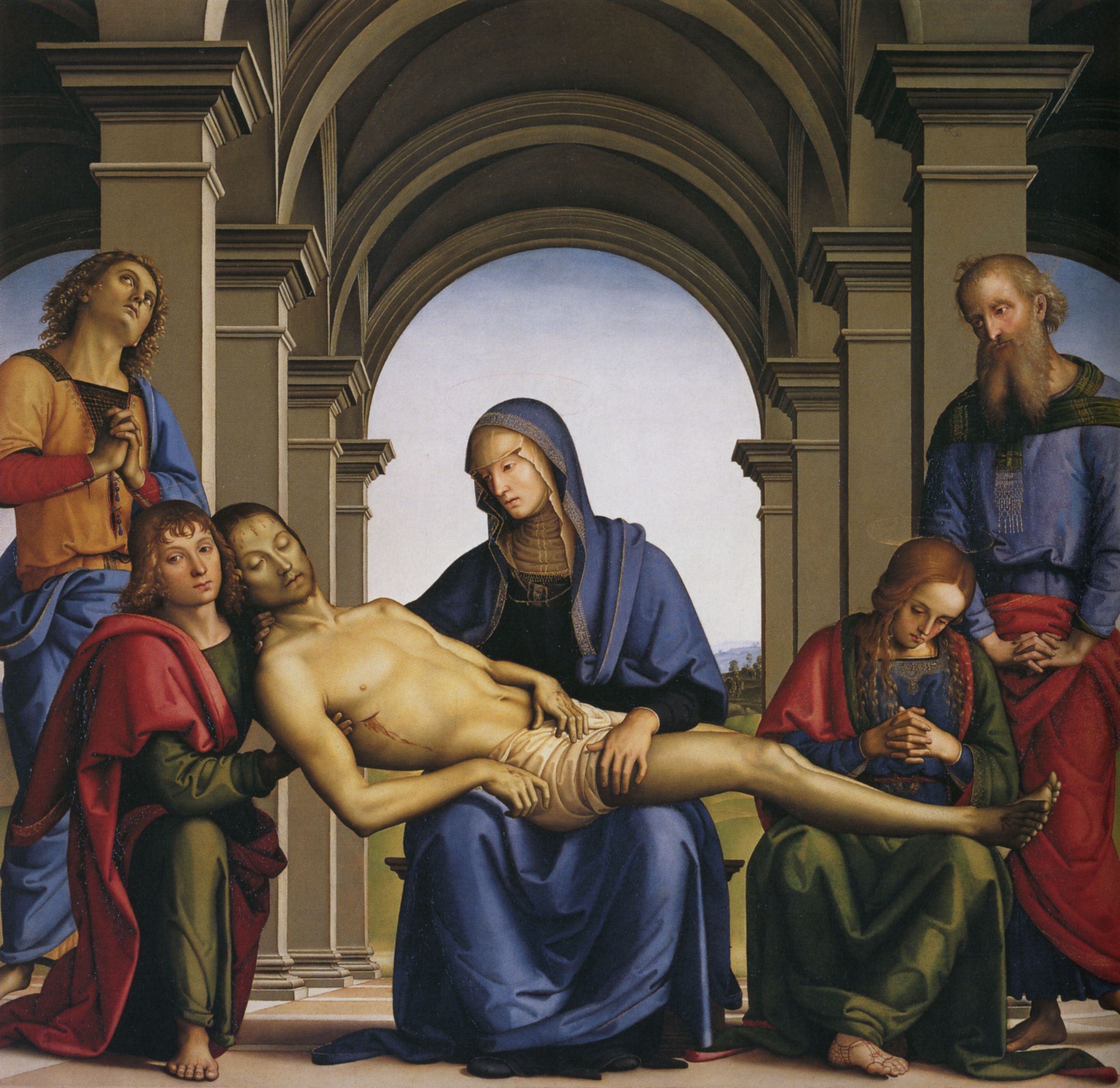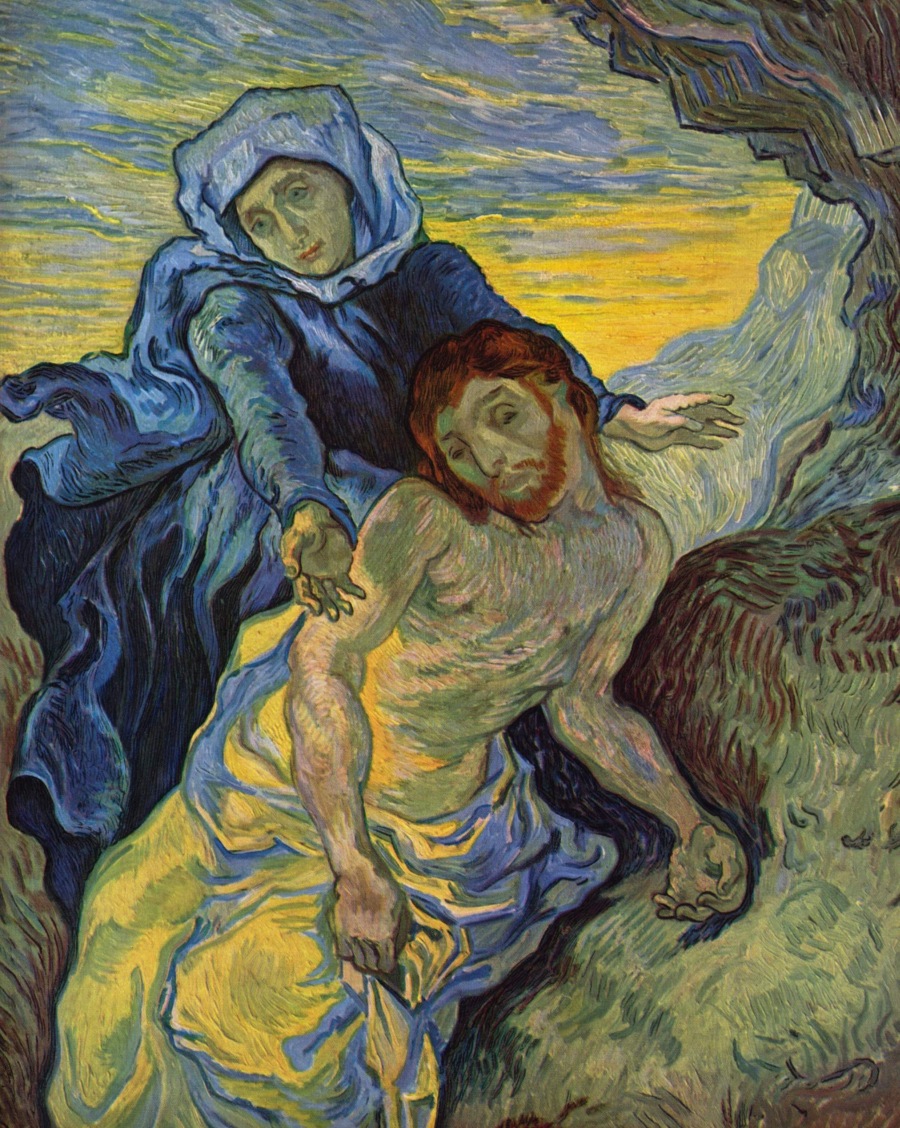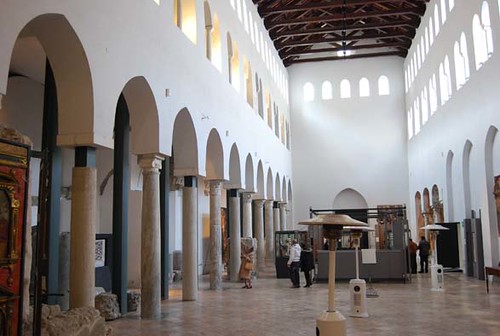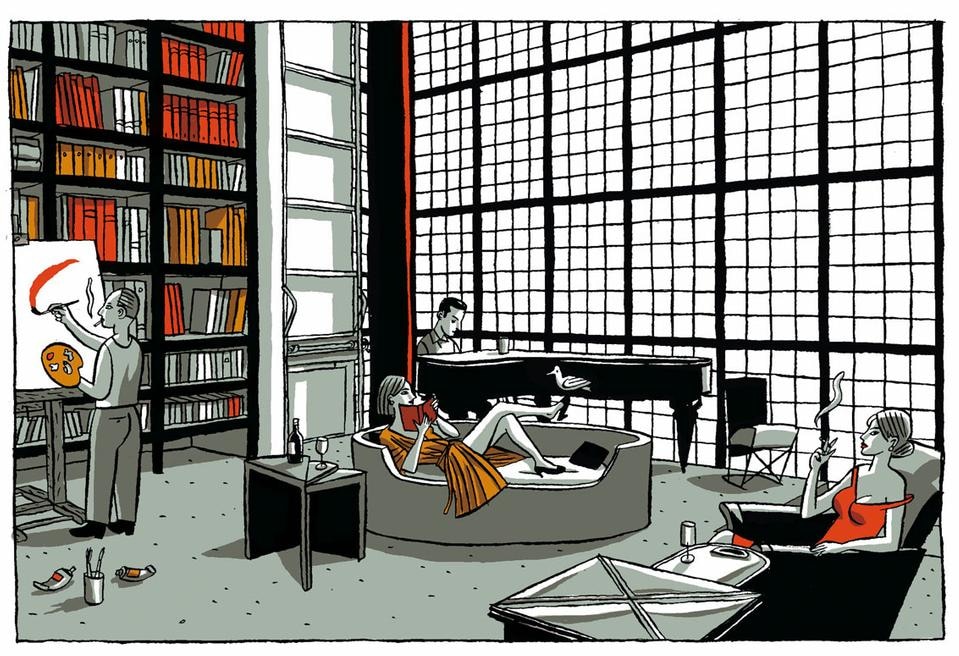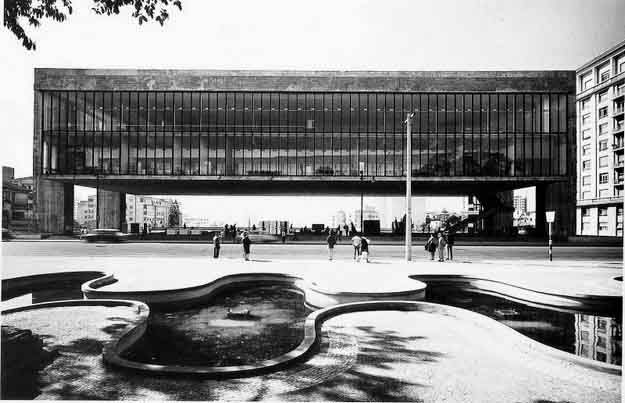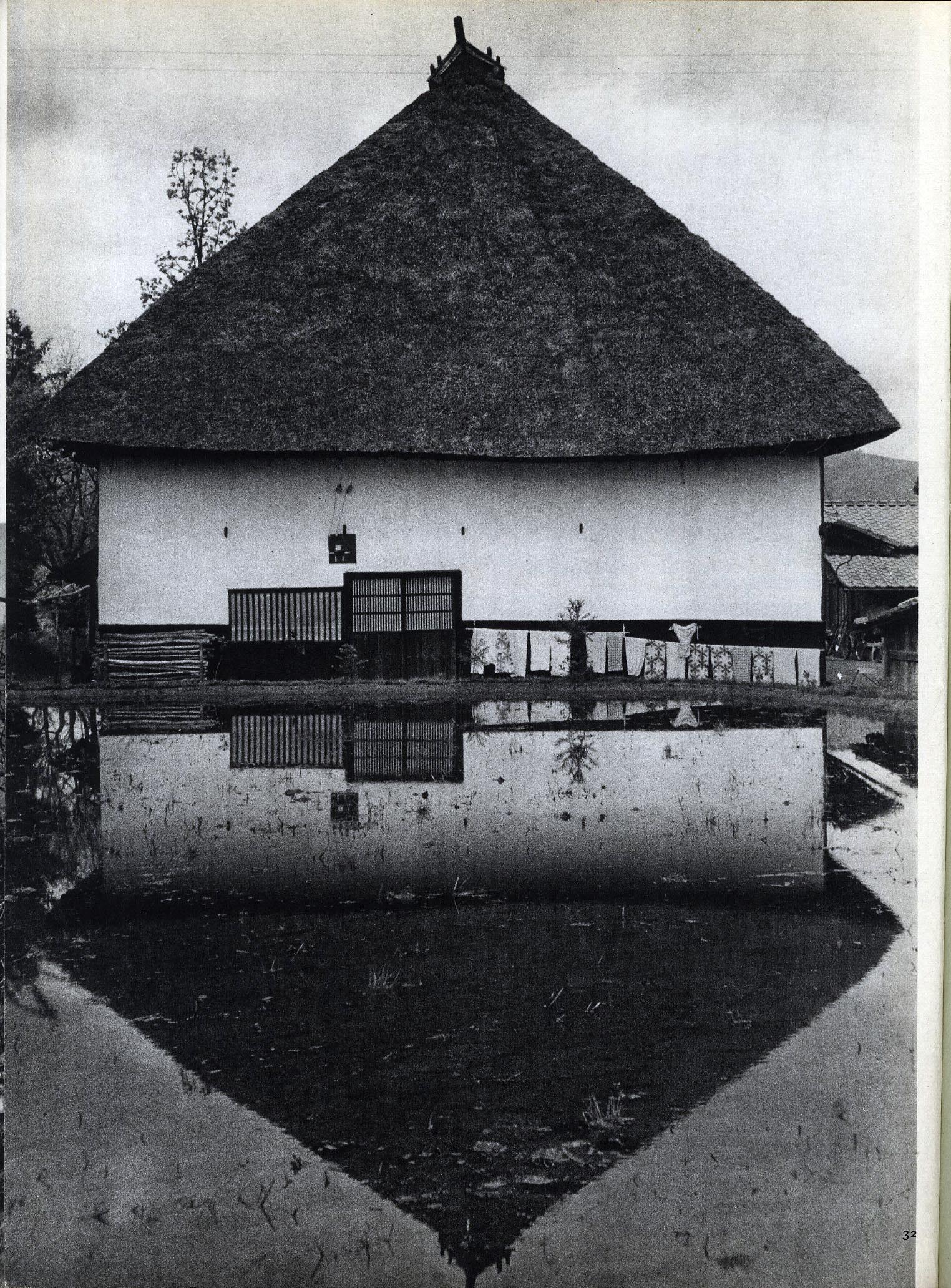 Les Œuvres poétiques complètes de Charles Péguy, 60e volume de la « Bibliothèque de la Pléiade », sont publiées pour la première fois dans la collection en novembre 1941. Le cas est intéressant : il met en jeu un rapport privilégié avec des ayants droit très impliqués – la veuve et les fils de l’écrivain –, et s’inscrit dans un contexte historique lourd, l’Occupation, mais paradoxalement favorable à la collection comme à l’œuvre. Car ce qui frappe d’abord, c’est la rapidité de mise en œuvre du projet, qui n’est engagé qu’en avril 1940 : on commence juste alors à calibrer le futur volume, c’est-à-dire à évaluer un nombre de pages prévisionnel. Un an et demi plus tard, le livre est en librairie. Comment cela fut-il possible et pourquoi un tel empressement ?
Les Œuvres poétiques complètes de Charles Péguy, 60e volume de la « Bibliothèque de la Pléiade », sont publiées pour la première fois dans la collection en novembre 1941. Le cas est intéressant : il met en jeu un rapport privilégié avec des ayants droit très impliqués – la veuve et les fils de l’écrivain –, et s’inscrit dans un contexte historique lourd, l’Occupation, mais paradoxalement favorable à la collection comme à l’œuvre. Car ce qui frappe d’abord, c’est la rapidité de mise en œuvre du projet, qui n’est engagé qu’en avril 1940 : on commence juste alors à calibrer le futur volume, c’est-à-dire à évaluer un nombre de pages prévisionnel. Un an et demi plus tard, le livre est en librairie. Comment cela fut-il possible et pourquoi un tel empressement ?mercoledì 16 dicembre 2015
Œuvres poétiques de Charles Péguy en « Pléiade »
 Les Œuvres poétiques complètes de Charles Péguy, 60e volume de la « Bibliothèque de la Pléiade », sont publiées pour la première fois dans la collection en novembre 1941. Le cas est intéressant : il met en jeu un rapport privilégié avec des ayants droit très impliqués – la veuve et les fils de l’écrivain –, et s’inscrit dans un contexte historique lourd, l’Occupation, mais paradoxalement favorable à la collection comme à l’œuvre. Car ce qui frappe d’abord, c’est la rapidité de mise en œuvre du projet, qui n’est engagé qu’en avril 1940 : on commence juste alors à calibrer le futur volume, c’est-à-dire à évaluer un nombre de pages prévisionnel. Un an et demi plus tard, le livre est en librairie. Comment cela fut-il possible et pourquoi un tel empressement ?
Les Œuvres poétiques complètes de Charles Péguy, 60e volume de la « Bibliothèque de la Pléiade », sont publiées pour la première fois dans la collection en novembre 1941. Le cas est intéressant : il met en jeu un rapport privilégié avec des ayants droit très impliqués – la veuve et les fils de l’écrivain –, et s’inscrit dans un contexte historique lourd, l’Occupation, mais paradoxalement favorable à la collection comme à l’œuvre. Car ce qui frappe d’abord, c’est la rapidité de mise en œuvre du projet, qui n’est engagé qu’en avril 1940 : on commence juste alors à calibrer le futur volume, c’est-à-dire à évaluer un nombre de pages prévisionnel. Un an et demi plus tard, le livre est en librairie. Comment cela fut-il possible et pourquoi un tel empressement ?lunedì 14 dicembre 2015
Il post numero 2000 di DaSeyn
DaSeyn: EsserCi.
Escursioni in Arte, Architettura, Cinema, Design, Grafica, Internet, Informatica, Letteratura, Teatro.
Daseyn è già un tentativo, esplorazione di alcuni verso l'avanguardia, verso la capacità di vedere il nuovo che é al di là, e scoprire che in realtà è l'antico che, instancabilmente, torna.
DaSeyn è già un progetto comune, l'immaginare la novità insieme. DaSeyn non é ancora ciò che deve essere, ma c'è.
Manca l'inevitabile "lavorio del tempo".
Il tempo di duemila post non ha ancora reso DaSeyn ciò che deve essere, eppure la fedeltà a questo "immaginare la novità insieme" c'è stata. E, soprattutto, c'è stato l'essere insieme, fra noi e con tutti quelli che hanno voluto e vorranno accompagnarci, perché "è profezia l'amicizia, significato ed origine comune di noi viventi".
domenica 13 dicembre 2015
Steve Jobs syrien sur les murs de Calais

Steve Jobs, l'ancien patron d'Apple, un baluchon sur le dos et un ordinateur en main, sous un pont de Calais... La dernière oeuvre de Banksy, mystérieux artiste britannique célèbre pour ses fresques murales, fait réfléchir. Le street artist a voulu une nouvelle fois éveiller les esprits au sujet de la crise migratoire en choisissant de représenter Steve Jobs, fils d'un migrant de Syrie, sur un pont à l'entrée de la jungle de Calais.
D'après le Huffington Post, Banksy aurait déclaré : "Apple paie plus de 7 milliards de dollars d'impôts chaque année, et existe seulement car on a accueilli un jeune homme venu de Homs." D'après le site Culturebox, le père de Steve Jobs était en effet syrien, originaire d'Homs.
sabato 12 dicembre 2015
domenica 29 novembre 2015
venerdì 27 novembre 2015
domenica 22 novembre 2015
J. J. P. Oud, quartiere Kiefhoek a Rotterdam
sabato 21 novembre 2015
venerdì 20 novembre 2015
Pietà
sabato 14 novembre 2015
Le città impossibili: Burail in Chandigarh
Burail: un villaggio che si trovò improvvisamente circondato dalla nuova città di Chandigarh, capitale dello stato indiano del Punjab costruita ex novo nel XX secolo. Le immagini parlano da sole, specialmente la vista aerea: la maglia della nuova città si sforza di razionalizzare un tessuto spontaneo, non progettato. E' come una finestra che inquadra un paesaggio naturale, un oggetto artificiale messo a misura dello spazio esistente.
Più informazioni su The Funambulist
martedì 10 novembre 2015
Ikeonico
Ikeonico
[ɪ-keò-nɪ-ko]
agg. (pl. m. -ci; f. -ca, pl. -che)
Derivato dalla catena di bricolage Ikea e dall'agg. iconico.
1 (dispregiativo) Di gusto facile, apprezzabile dalla maggioranza e falsamente rivoluzionario: il risvoltino sul jeans è i.
2 (in architettura) Di un complesso edilizio: standardizzato, sottomesso al consumismo.
[ɪ-keò-nɪ-ko]
agg. (pl. m. -ci; f. -ca, pl. -che)
Derivato dalla catena di bricolage Ikea e dall'agg. iconico.
1 (dispregiativo) Di gusto facile, apprezzabile dalla maggioranza e falsamente rivoluzionario: il risvoltino sul jeans è i.
2 (in architettura) Di un complesso edilizio: standardizzato, sottomesso al consumismo.
lunedì 9 novembre 2015
Remembering illustrator Noriyoshi Ohrai through his iconic movie posters
Via Spoon & Tamago
We were saddened to learn that yesterday, on October 27, 2015, Japanese illustrator and oil painter Noriyoshi Ohrai passed away from pneumonia. He was 79. The iconic artist was an art student dropout who began his career in 1962 illustrating book covers and newspaper advertisements. His big break came when he was 45 years old. An illustration he did of the movie Star Wars for an obscure Japanese science fiction magazine made its way to the hands of George Lucas, who liked it so much he commissioned Ohrai to create the universal poster for the movie’s sequel: The Empire Strikes Back.
domenica 8 novembre 2015
Basilica del Crocifisso di Amalfi - il restauro "irrispettoso"
Stroncato da Boscarino e da tutti i più importanti studiosi contemporanei come "intervento moderno, irrispettoso su monumento preesistente" (1), il progetto della Soprintendenza ai beni ambientali e architettonici di Salerno/Avellino eseguito nel 1994 nella Basilica del crocifisso di Amalfi è invece un esempio di come si possa avere coraggio anche in una disciplina dottrinale come il restauro.
giovedì 5 novembre 2015
mercoledì 4 novembre 2015
martedì 3 novembre 2015
Des voitures à habiter
Ne manquez pas cette exposition qui mettra en lumière l’automobile, objet de fascination pour Le Corbusier !
L’exposition "Des voitures à habiter :automobile et modernisme XXe-XXIe siècle" se tient dans le cadre des commémorations du 50ème anniversaire de la disparition de Le Corbusier à la villa Savoye.
lunedì 2 novembre 2015
Ipse dixit: Bloy
domenica 1 novembre 2015
Yes Theatre, Hebron, Palestine
The importance of arts in society is undeniable, it communicates across all cultures, tells the stories of the past and present, and inspires minds, both young and old, to do beautiful things.
Pablo Picasso once said, "Every child is an artist. The problem is how to remain an artist once he grows up."
Local community must recognize the invaluable impression an education rich in the arts can make on a young mind. The arts have proven to keep children in school, provide motivation and help children better understand the world in which they live.
"You’re never too young to discover the magic of live theatre”
sabato 31 ottobre 2015
lunedì 26 ottobre 2015
Mappatura e riordino della segnaletica turistica
Si è effettuato il censimentoe la mappatura georeferenziata della segnaletica pedonale esistente a Venezia, nella Città storica, nelle principali aree di Mestre, Giudecca, Lido e Pellestrina, Murano, Burano, Torcello e Sant’Erasmo.
Il riordino della segnaletica turistica è finalizzato ad agevolare la mobilità urbana, per redistribuire i flussi turistici che sempre più congestionano la città storica, indirizzando i visitatori verso i luoghi di visita meno noti al turismo di massa e verso le zone meno frequentate ma non meno interessanti della città, evitando così il tradizionale intasamento nell’area marciana e realtina.
E’ inoltre in preparazione una mostra tematica della segnaletica turistica, legata alla storia del turismo in città, agli itinerari, ecc. Con l'occasione si predisporrà un libro bianco o catalogo e produzione di un video, performance. Si disseminerà l’evento con conferenza stampa, laboratorio ecc. tramite i social media.
http://www.comune.venezia.it/
Latent Architecture
Vi segnaliamo questo nuovo blog, di cui riportiamo la pagina intitolata Regole del blog:
REGOLE DEL BLOG
Cosa sarebbe il mondo senza linee editoriali ben specifiche? Un paradiso, forse. Ma i paradisi non mi piacciono e quindi ho stilato una lista di regole a cui attenermi strettamente, o almeno che avranno bisogno di una valida scusa quando deciderò di infrangerle.
_________________________________________________________________________________
Latent Architecture significa architettura nascosta in bella vista, o come dicono gli inglesi, hidden in plain sight, quindi per un motivo o per l’altro, dimenticata.
Ad esempio:
L’ultimo edificio dell’ultimo premio Pritzker? Non mi interessa.
Il nuovo capolavoro di Renzo Piano? Lèvate.
La casa di campagna che mio nonno si è fatto costruire nel ’34 da quel suo amico che faceva il muratore? Nemmeno (non che mio nonno fosse famoso, è che quella casa faceva davvero schifo.).
Se un giorno parlerò della Fallingwater di Wright, e spero vivamente di farlo, sarà uno strappo alla regola.
Del resto il blog è il mio, e faccio come mi pare.
REGOLA N°2 – Non ci prendiamo – troppo – sul serio
Chiunque sano di mente sa bene che l’architettura può essere tremendamente noiosa.
Nonostante la passione che ci muove tutti e nonostante la bellezza indiscutibile a cui siamo quotidianamente esposti, i dettagli costruttivi di un plinto di fondazione in calcestruzzo armato possono rivelarsi una gran rottura di coglioni.
Quindi non solo non vedrete dettagli tecnici su questo blog, se non quando davvero necessario, ma non vedrete neanche le famose piante tutte bianche coi muri neri e le ombre che tutti amano ma nessuno sopporta, gli alberelli che sembrano bonsai, i recinti, gli “schemi” planivolumetrici, i diagrammi, e, che dio ce ne scampi, non vedrete mai opere a forma di “casa archetipale” ovvero architetture con due muri e un tetto a falde in cemento o legno.
Non vedrete stucchi bianchi e case “minimali”, e saremo tutti felici.
O almeno ci avremo provato.
Perché se l’architettura dev’essere strumento di oppressione ed esclusione culturale, se dev’essere vezzo elitario, allora la rifiutiamo.
Perché dovrebbe essere diverso per l’architettura? Cercherò di trattare solo posti / edifici che ho visitato di persone, e solo con foto fatte da me. Questo approccio ha innumerevoli vantaggi, ma anche alcuni svantaggi:
1. Sarò lento. Le visite dal vivo richiedono tempo e denaro, due cose di cui sono sempre a corto. Ci metterò un po’.
2. Le foto, come già detto, saranno scattate da me.
REGOLE DEL BLOG
Cosa sarebbe il mondo senza linee editoriali ben specifiche? Un paradiso, forse. Ma i paradisi non mi piacciono e quindi ho stilato una lista di regole a cui attenermi strettamente, o almeno che avranno bisogno di una valida scusa quando deciderò di infrangerle.
_________________________________________________________________________________
qui sopra, un esempio di linea editoriale.
REGOLA N°1 – Ridare spazio agli spazi
Non parlo di architetture / edifici / luoghi / posti / famosi. Non si tratta di snobismo, è solo che poi dovrei cambiare il nome al blog e sinceramente non ne ho voglia.Latent Architecture significa architettura nascosta in bella vista, o come dicono gli inglesi, hidden in plain sight, quindi per un motivo o per l’altro, dimenticata.
Ad esempio:
L’ultimo edificio dell’ultimo premio Pritzker? Non mi interessa.
Il nuovo capolavoro di Renzo Piano? Lèvate.
La casa di campagna che mio nonno si è fatto costruire nel ’34 da quel suo amico che faceva il muratore? Nemmeno (non che mio nonno fosse famoso, è che quella casa faceva davvero schifo.).
Se un giorno parlerò della Fallingwater di Wright, e spero vivamente di farlo, sarà uno strappo alla regola.
Del resto il blog è il mio, e faccio come mi pare.
REGOLA N°2 – Non ci prendiamo – troppo – sul serio
Chiunque sano di mente sa bene che l’architettura può essere tremendamente noiosa.
Nonostante la passione che ci muove tutti e nonostante la bellezza indiscutibile a cui siamo quotidianamente esposti, i dettagli costruttivi di un plinto di fondazione in calcestruzzo armato possono rivelarsi una gran rottura di coglioni.
Quindi non solo non vedrete dettagli tecnici su questo blog, se non quando davvero necessario, ma non vedrete neanche le famose piante tutte bianche coi muri neri e le ombre che tutti amano ma nessuno sopporta, gli alberelli che sembrano bonsai, i recinti, gli “schemi” planivolumetrici, i diagrammi, e, che dio ce ne scampi, non vedrete mai opere a forma di “casa archetipale” ovvero architetture con due muri e un tetto a falde in cemento o legno.
Non vedrete stucchi bianchi e case “minimali”, e saremo tutti felici.
O almeno ci avremo provato.
Perché se l’architettura dev’essere strumento di oppressione ed esclusione culturale, se dev’essere vezzo elitario, allora la rifiutiamo.
REGOLA N°3 – Solo live
I giornalisti musicali non fanno altro che dire che non si conosce un gruppo finché non lo si vede in un concerto dal vivo.Perché dovrebbe essere diverso per l’architettura? Cercherò di trattare solo posti / edifici che ho visitato di persone, e solo con foto fatte da me. Questo approccio ha innumerevoli vantaggi, ma anche alcuni svantaggi:
1. Sarò lento. Le visite dal vivo richiedono tempo e denaro, due cose di cui sono sempre a corto. Ci metterò un po’.
2. Le foto, come già detto, saranno scattate da me.
buon proseguimento.
domenica 25 ottobre 2015
Dakar: a city full of color
Here in Dakar, it seems that the entire urban landscape is full of color: The walls, the sidewalks, the transport, houses and buildings, as well as the bright clothes of urban dwellers themselves. For example, the bright contrast between the light brown sands of this Sahelian city and the azure sky. The walls dressed in its history of graffiti, murals and mosaics. Property owners of each house and building design the small sidewalk spaces in front of their buildings, assembling boldly colored tiles in reds, blues, yellows and oranges. The urban scene is a mix of colors:


A yellow mosque against a blue sky. Dakar, Senegal.
sabato 24 ottobre 2015
Balthus, la mostra
Scuderie del Quirinale / Villa Medici, Roma
24 ottobre 2015 - 31 gennaio 2016
Kunstforum Wien, Vienna
febbraio 2016 - giugno 2016
A cura di Cécile Debray, curatrice del Musée National d'Art Moderne/Centre Pompidou
Con una grande mostra monografica divisa in due sedi, Roma celebra – a quindici anni dalla morte – Balthasar Klossowski de Rola, in arte Balthus (1908-2001), maestro tra i più originali ed enigmatici del Novecento, il cui rapporto con la città eterna fu decisivo per gli indirizzi della sua arte.
venerdì 23 ottobre 2015
Amalfi e Atrani
Amalfi fu la prima delle repubbliche marinare, si arricchì per tre secoli, fino al XIV, quando fu distrutta e ridimensionata da maremoti e saccheggi. Atrani era la città dei suoi nobili, unica fra i paesi della costiera a godere di indipendenza e del rango, appunto, di "città".
Anish Kapoor in La Tourette
Kapoor was born in India to parents of Punjabi and Iraqi-Jewish heritage. He moved to London to study at the Hornsey College of Art (1973–77) and the Chelsea School of Art (1977–78). A return visit to India in 1979 sparked new perspectives on the land of his birth. These were reflected through his use of saturated pigments and striking architectural forms in bodies of work such as 1000 Names. Created between 1979 and 1980, this series consisted of arrangements of abstract geometric forms coated with loose powdered pigments that spilled beyond the object itself and onto the floor or wall.
During the 1980s and ’90s Kapoor was increasingly recognized for his biomorphic sculptures and installations, made with materials as varied as stone, aluminum, and resin, that appeared to challenge gravity, depth, and perception. In 1990 he represented Great Britain at the Venice Biennale with his installation Void Field, a grid of rough sandstone blocks, each with a mysterious black hole penetrating its top surface. The following year he was honoured with the Turner Prize, a prestigious award for contemporary art. Kapoor continued to explore the idea of the void during the remainder of the decade, creating series of works that incorporated constructions that receded into walls, disappeared into floors, or dramatically changed depth with a simple change in perspective.
Kapoor, Anish: “Leviathan” [Credit: Benoit Tessier—Reuters/Landov]In the early 21st century Kapoor’s interest in addressing site and architecture led him to create projects that were increasingly ambitious in scale and construction. For his 2002 installation Marsyas at the Tate Modern gallery in London, Kapoor created a trumpetlike form by erecting three massive steel rings joined by a 550-foot (155-metre) span of fleshy red plastic membrane that stretched the length of the museum’s Turbine Hall. In 2004 Kapoor unveiled Cloud Gate in Chicago’s Millennium Park; the 110-ton elliptical archway of highly polished stainless steel—nicknamed “The Bean”—was his first permanent site-specific installation in the United States. For just over a month in 2006, Kapoor’s Sky Mirror, a concave stainless-steel mirror 35 feet (11 metres) in diameter, was installed in New York City’s Rockefeller Center. Both Cloud Gate and Sky Mirror reflected and transformed their surroundings and demonstrated Kapoor’s ongoing investigation of material, form, and space.
Michal Raz-Russo
Kapoor’s later works include ArcelorMittal Orbit (completed 2011), a 377-foot (115-metre) tower surrounded by a looping lattice of red tubular steel. The structure, commissioned by the city of London for the 2012 Olympic Games, stood in London’s Olympic Park, and an observation deck at the top of the tower opened to the public in conjunction with the sporting event.
Kapoor was made Commander of the Order of the British Empire (CBE) in 2003, and he was named a knight bachelor in 2013. He received the Japan Art Association’s Praemium Imperiale prize for sculpture in 2011.
giovedì 22 ottobre 2015
mercoledì 21 ottobre 2015
venerdì 16 ottobre 2015
Il santuario di Sambutsuji
giovedì 15 ottobre 2015
Audiovisual Tricycles by ‘VJ Suave’ Project Animations on the Streets of Rio de Janeiro
Pay attention folks, interactive public art doesn’t get much better than this.
mercoledì 14 ottobre 2015
Ipse dixit: Matsumura
martedì 13 ottobre 2015
The city in the comics
Architecture, contemporary cities and comics are three issues, declared from the outset with the title of the ehibition, that was curated along with Jean-Marc Thevenet. Going further into detail, can you explain what it talks about?
The exhibition "Archi et BD: la ville dessinée" (at the Cité de l'Architecture up to the end of November) tells the story of cities as interpreted by the authors of comics and graphic novels. The real subject of the exhibition is in fact the city, more than architecture. The exhibition has been laid out in a chronological sequence, beginning in the early twentieth century with Winsor McCay, the creator of Little Nemo, a legendary figure who "flies" between buildings in Chicago. At the entrance, a fresco that we commissioned to the French artist François Olislaeger is a free interpretation of a century of architecture and comics brings together comic characters and the most iconic buildings of the twentieth-century, such as the arch by Rem Koolhaas in Shanghai stacked on top of the building by Ricciotti in Aix en Provence, the Caixa Forum in Madrid by Herzog & DeMeuron spiderman throwing himself off Zaha Hadid's ski jump in Innsbruck. It is a reciprocal exchange between two disciplines that have nothing in common, over the course of a century.
lunedì 5 ottobre 2015
Il pericolo delle idee (Edgar Morin & Tariq Ramadan)
Tariq Ramadan: (…) La chiave è l’educazione, l’istruzione: è a scuola che si impara la storia della nazione, la storia comune ce in inglese viene chiamata the narrative. È a scuola che si dà corpo all’identificazione e che si nutre il sentimento di appartenenza. L’inclusione, l’apertura, ciò che ho chiamato negli anni Ottanta l’”integrazione delle intimità” è innanzitutto scolastica. È là che comincia l’esclusione che è anche un’esclusione dalla memoria comune.
Claude-Henry du Bord: Quale mediazione si può trovare o adottare se, da un lato, le istituzioni falliscono e, dall’altro l’educazione non riesce a stabile una nuova modalità di trasmissione?
Claude-Henry du Bord: Quale mediazione si può trovare o adottare se, da un lato, le istituzioni falliscono e, dall’altro l’educazione non riesce a stabile una nuova modalità di trasmissione?
domenica 4 ottobre 2015
Ipse dixit: Thomas Merton
Per quanto l'uomo e il suo mondo possano sembrare in rovina, per quanto la disperazione umana possa diventare terribile, finchè continua ad essere un uomo, la sua stessa umanità seguita a dirgli che la vita ha un significato. Ed è proprio questa una delle ragioni per cui l'uomo tende a ribellarsi contro se stesso.
La nostra vita, sia come individui che come appartenenti a una razza inquieta e in lotta continua, ci dimostra chiaramente che deve avere un significato, di cui però una parte ancora ci sfugge. Eppure scoprire questo significato e vivere in conformità ad esso è il nostro compito nella vita. Abbiamo quindi qualche cosa per cui vivere. Il processo vitale dell'esistenza, del crescere, del divenire qualcuno è precisamente la consapevolezza gradualmente cosciente di ciò che sia questo "qualche cosa".
La nostra vita, sia come individui che come appartenenti a una razza inquieta e in lotta continua, ci dimostra chiaramente che deve avere un significato, di cui però una parte ancora ci sfugge. Eppure scoprire questo significato e vivere in conformità ad esso è il nostro compito nella vita. Abbiamo quindi qualche cosa per cui vivere. Il processo vitale dell'esistenza, del crescere, del divenire qualcuno è precisamente la consapevolezza gradualmente cosciente di ciò che sia questo "qualche cosa".
Thomas Merton. Nessun uomo è un'isola
Rapport à /Le Corbusier Université Nationale Technique d’Athènes, Grèce 06.10.2015-11.01.201
Με πρωτοβουλία της Σχολής Αρχιτεκτόνων του Ε.Μ.Π. και τη συνεργασία πολιτιστικών και επιστημονικών φορέων οργανώνεται δέσμη εκδηλώσεων και άλλων δράσεων με αφορμή τα 50 χρόνια από τον θάνατο του Le Corbusier και γενικό τίτλο «Αναφορά στον Ελ/Le Corbusier». Οι εκδηλώσεις θα πραγματοποιηθούν το Φθινόπωρο 2015 και την Άνοιξη 2016 με τη στήριξη του Ιδρύματος Le Corbusier και εντάσσονται στο ευρύτερο πλέγμα εκδηλώσεων που οργανώνονται διεθνώς με τη συγκυρία των 50 χρόνων από τον θάνατο του μεγάλου αρχιτέκτονα.
Ο Charles Edouard Jeanneret, που έγινε παγκόσμια γνωστός με το όνομα Le Corbusier, γεννήθηκε στις 6 Οκτωβρίου 1887 στην ορεινή Ελβετία και έφυγε στις 27 Αυγούστου 1965, κολυμπώντας στο παραθαλάσσιο Roquebrune Cap Martin της Γαλλίας. Στο πρόσωπό του εκφράστηκε ιδανικά η νεωτερικότητα του εικοστού αιώνα, με όλες τις αντιφάσεις και τις αντιπαραθέσεις της. Υπήρξε ένας οικουμενικός άνθρωπος των γραμμάτων και των τεχνών, που συνδύασε τη θεωρία με την πράξη και δημιούργησε ταυτόχρονα ως αρχιτέκτονας, ζωγράφος και πολεοδόμος, χτίζοντας σε τρεις ηπείρους και γράφοντας βιβλία που μεταφράστηκαν σε δεκάδες γλώσσες. Η επιρροή του γεφύρωσε πολιτικές αντιθέσεις, διαμόρφωσε γενιές μαθητών και βεβαίως γενιές επικριτών. Η σχέση του με την Ελλάδα ήταν μια σχέση μαγείας και μαθητείας, με διαρκείς και αμοιβαίες ανταλλαγές. Δεκαοκτώ Έλληνες δούλεψαν στο αρχιτεκτονικό εργαστήρι του από τη δεκαετία του 1930 ως το 1965. Σήμερα, πενήντα χρόνια από το θάνατό του, νέοι και λιγότερο νέοι αρχιτέκτονες, δημιουργοί και στοχαστές επιστρέφουν στην ακτινοβολία του έργου του με μια σύγχρονη διάθεση ανακάλυψης και κριτικής.
Οι εκδηλώσεις οργανώνονται από τη Σχολή Αρχιτεκτόνων Μηχανικών του Εθνικού Μετσόβιου Πολυτεχνείου με τη στήριξη του Ιδρύματος Le Corbusier. Οι εκδηλώσεις συνδιοργανώνονται ή στηρίζονται στο σύνολο ή κατά περίπτωση από το Γαλλικό Ινστιτούτο, την Ελβετική Πρεσβεία, το Ελληνικό Docomomo, το Κέντρο Αρχιτεκτονικής της Μεσογείου, και άλλους πολιτιστικούς και επιστημονικούς φορείς.
sabato 3 ottobre 2015
venerdì 2 ottobre 2015
mercoledì 30 settembre 2015
Henri Rousseau - War - Guerra - Guerre - 戦争
 |
| Henri Rousseau, War, 1984 - Musée d'Orsay, Paris |
From there the war, the eternal, terrible, gruesome child that Henry Rousseau painted in 1894 and which is the image of the poster of this year. While the pink clouds, the gentle and blue sky, the hills full of promise and the girl white dress remind us that it would still be nice to live in harmony and peace, here they are, taking away your breath, hurting us and intimidating the dead branches, the blackened falling leaves, the unrecognizable mad horse, the bodies, the crows, the sword, the strange toy that the tyrannical child brings like a flag and then the grin on his distorted face.
They are objects of intense immobility and we will identify ourselves with those tiny stones on which men and women, whose greed and ferocity have taken away their life, rest their painful, black hair.
War is cruel, causes death, stasis and winter, it is ruthless as the unhealthy and unstable Rousseau’s girl, that has teeth too white and too compact, a sign of how horrible is her apparent running and her tragic rejoice. The Rousseau’s framework invites us to cringe us, to stop for a moment, to become silence, to take a healthy distance from almightiness the delirium that broods in us. Rousseau’s framework tells us that our struggle should never be like that turbid little girl lonely ride who can not smile.
Español
De ahí la guerra, la eterna, tremenda, macabra niña que Henry Rousseau pintó en 1894 y que es la imagen del manifiesto de este año. Las nubes rosas, el cielo dulcemente azul, las colinas llenas de promesa y el vestido blanco de la niña nos recuerdan que sería bello vivir en armonía y en paz, pero vienen a quitarnos el aliento, a herirnos y a atemorizarnos las ramas secas, las requemadas hojas que caen, el irreconocible caballo desbocado, los cadáveres, los cuervos, la espada, el extraño juguete que la tiránica niña porta como bandera y, finalmente, la mueca de su rostro desencajado. Son objetos de intensa inmovilidad y nosotros nos identificamos con esas pequeñas piedras sobre las que los hombres y las mujeres, cuya codicia y ferocidad les han quitado la vida, apoyan sus dolorosas cabelleras de ébano. La guerra es cruel, provoca la muerte, estancamiento e invierno, y es despiadada como la desquiciada e inestable niña de Rousseau, de dientes demasiado blancos y demasiado compactos, signo de cuán horrible es su aparente correr y su trágico regocijo. Así, pues, el cuadro de Rousseau nos invita a hacernos pequeños, a detenernos un momento, a guardar silencio, a tomar una sana distancia del delirio de omnipotencia que anida en nosotros. El cuadro de Rousseau nos hace entender que nuestra batalla no tendría que ser nunca similar a la solitaria cabalgata de esa turbia niña que no sabe sonreír.
Italiano
Da lì la guerra, l’eterna, tremenda, macabra bambina che Henry Rousseau dipinse nel 1894 e che fa da immagine al manifesto di quest’anno. Mentre le nuvole rosa antico, il cielo dolcemente azzurro, le colline cariche di promessa e l’abito bianco della bambina ci fanno ricordare che sarebbe pur bello vivere in armonia e in pace, ecco che vengono a toglierci il fiato, a ferirci e intimorirci i rami secchi, le annerite foglie cadenti, l’irriconoscibile cavallo impazzito, i cadaveri, i corvi, la spada, lo strano giocattolo che la tirannica bimba porta come bandiera e infine il ghigno del suo volto stravolto. Sono oggetti d’intensa immobilità e noi ci identifichiamo con quei minuscoli sassi sui quali gli uomini e le donne, cui l’avidità e la ferocia han tolto la vita, poggiano le loro dolorose, chiome d’ebano. La guerra è crudele, provoca morte, stasi e inverno, ed è spietata come l’insana e instabile bambina di Rousseau, dai denti troppo bianchi e troppo compatti, segno di quanto sia orribile il suo apparente correre e il suo tragico gioire. Il quadro di Rousseau ci invita dunque a farci piccoli, a fermarci un momento, a diventare silenzio, a prendere una sana distanza dal delirio d’onnipotenza che cova in noi. Il quadro di Rousseau ci fa capire che la nostra battaglia non dovrebbe mai essere simile alla solitaria cavalcata di quella torbida bambina che non sa sorridere.
François
D’ici la guerre, l’éternelle, l’horrible, la macabre petite fille qu’Henry Rousseau a peint en 1894 et qui sert d’image pour l’affiche de cette année. Tandis que les nuages colorés d’un rose ancien, le ciel doucement bleu, les collines chargées de promesse et l’habit blanc de la petite fille nous rappellent que ça serait pourtant beau de vivre en paix et en harmonie, voici que les branches sèches, les feuilles noircies et mortes, le cheval méconnaissable et fou, les cadavres, les corbeaux, l’épée, l’étrange jouet que la petite fille tyrannique brandit comme un drapeau et enfin l’expression déformée de son visage nous coupent le souffle, nous blessent et nous effrayent. Ce sont des objets d’une intense fixité et nous nous identifions avec ces petits cailloux sur lesquels les hommes et les femmes, à qui l’avidité et la féroce ont enlevé la vie, posent leurs douloureuses chevelures couleur ébène. La guerre est cruelle, elle provoque la mort, la stase et l’hiver, et elle est sans pitié comme l’insane et instable petite fille de Rousseau, aux dentes trop blanches et trop resserrées, signe de l’horreur de son apparente course et de son rire tragique. Le tableau de Rousseau nous invite donc à nous faire tous petits, à nous arrêter un court instant, à devenir silence, à prendre une saine distance par rapport au délire de toute-puissance qui guette chacun de nous. Le tableau de Rousseau nous fait comprendre que notre bataille ne devrait jamais ressembler à la solitaire chevauchée de cette petite fille sombre qui ne sait pas sourire.
日本人
この狂気から戦争が生まれる。1894 年にアンリ・ルソーは、恐ろしい死を永遠に運ぶ少女 の姿によって戦争を表現した。今年のトナーレスターテはこの絵をイメージとして選んだ。 ピンクの雲、優しい青空、約束の地に見える丘、少女の白い服は平和と調和のうちに生き る美しさを思わせる。しかしすぐに息切れし、恐怖感を覚え、心を傷つけるイメージが現 れる。枯れた枝、今にも落ちそうな黒い葉、馬に見えないほどおかしく狂った馬、死体、 カラス、少女が握っている剣と旗のようにも見える風変わりな道具とその不気味な微笑み。 すべてに動きがない。この絵を見ると、死体の下にある小さな石のように麻痺してしまい そうだ。まだ髪が黒い年かさの男と女は欲望と残虐に苦しめられ、命を奪われた。 戦争とは残酷なもの。死、膠着、終りのない冬を作る。戦争は、ルソーの狂気に満ちた不 安定な少女と同じように無慈悲なものだ。真っ白な並びの良い歯とその笑みも身の毛がよ だつ。走りぬける彼女の悲劇と恐ろしい喜びを際立たせるからだ。ルソーの絵は、私たち が小さくなるように導いているかに見える。一瞬立ち留まり沈黙し、心の奥深く宿る全能 の狂気から距離を保つように。本心から笑えないあの少女の曖昧さとは異なり、われわれ の走りが孤独ではないように。
From the introduction of Tonalestate 2015 "Fiat voluntas mea"
The Nameless Paint Set: An Alternative Way of Understanding Color
As companies like Crayola dream up more inventive and brandable colors for their crayons like “inchworm” or “mango tango,” a young designer duo from Japan created this alternative way of exploring colors by doing away with names altogether. Nameless Paints are a set of 10 paint tubes designed by Yusuke Imai and Ayami Moteki that replace more familiar color names (which can be a tad more ambiguous, see: “jazzbery jam!”) with visual depictions of the primary colors magenta, yellow, and cyan mixed inside. The visual labeling system also relies on proportion to depict more or less of different colors to create additional shades of green, orange, or blue.
sabato 26 settembre 2015
venerdì 25 settembre 2015
Astral Weeks - Van Morrison
"If I ventured in the slipstream..." Così comincia a cantare Van Morrison nella prima canzone dell'album più bello di tutti i tempi, mentre il contrabbasso, la chitarra acustica e le spazzole del batterista formano il più bel tappeto sonoro che si possa improvvisare. La canzone è Astral Weeks, è la title-track ed è una canzone d'amore fatta a domanda, per "rinascere di nuovo".
giovedì 24 settembre 2015
Gotico e Romanico in breve
Il romanico ha come sua caratteristica fondamentale che nulla è simmetrico, perché all'uomo non è possibile la perfezione, che è solo di Dio. Diverso è lo stile gotico; lì si vuole esprimere un altro concetto, cioè che tutto deve essere orientato verso l'alto, perché tutto tende all'alto. Quale sia più giusto, chiedete? Entrambi, naturalmente, l'uno non contraddice l'altro.
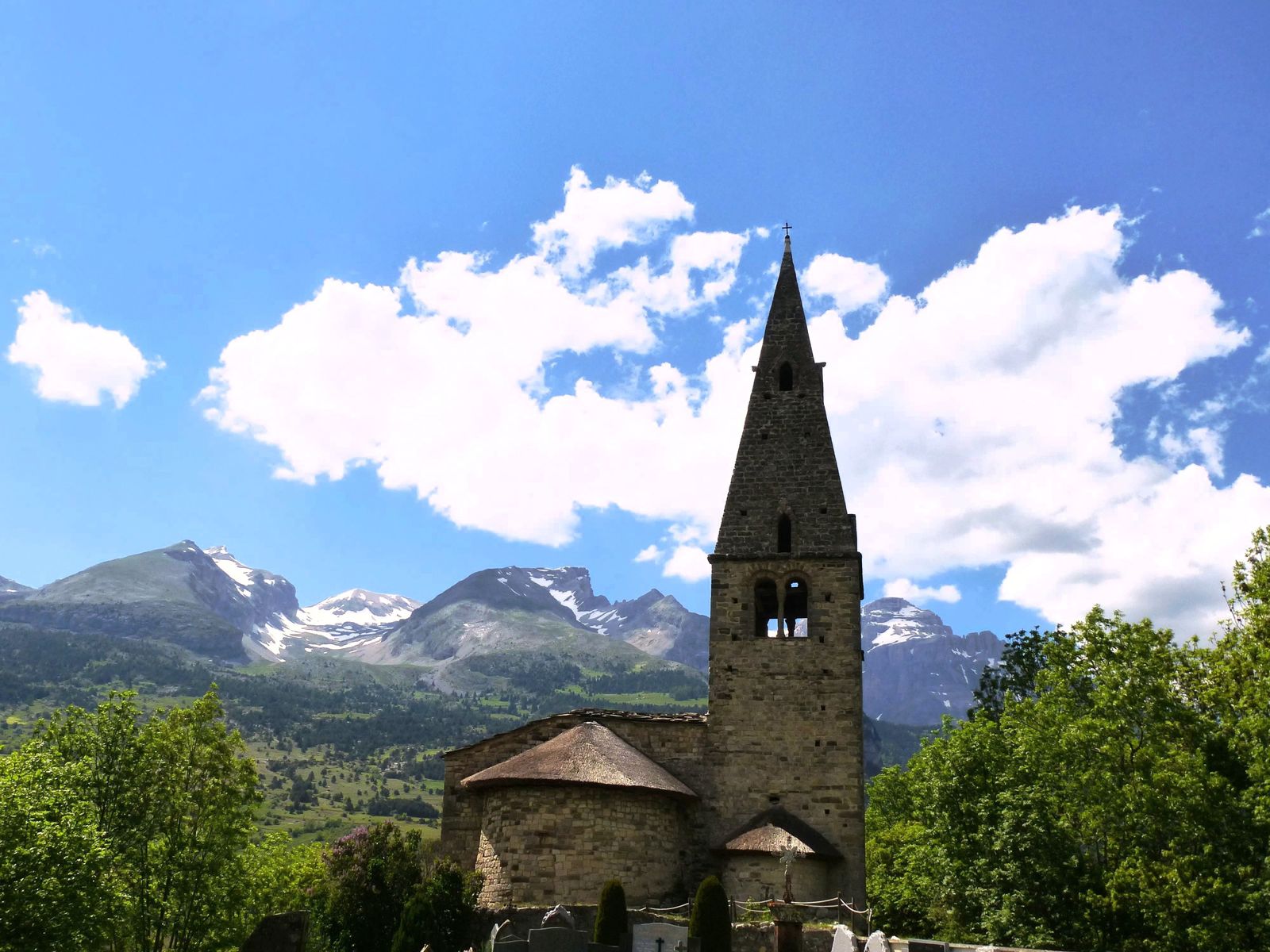 |
| Mère église, Saint-Disdier, cappella XI sec. |
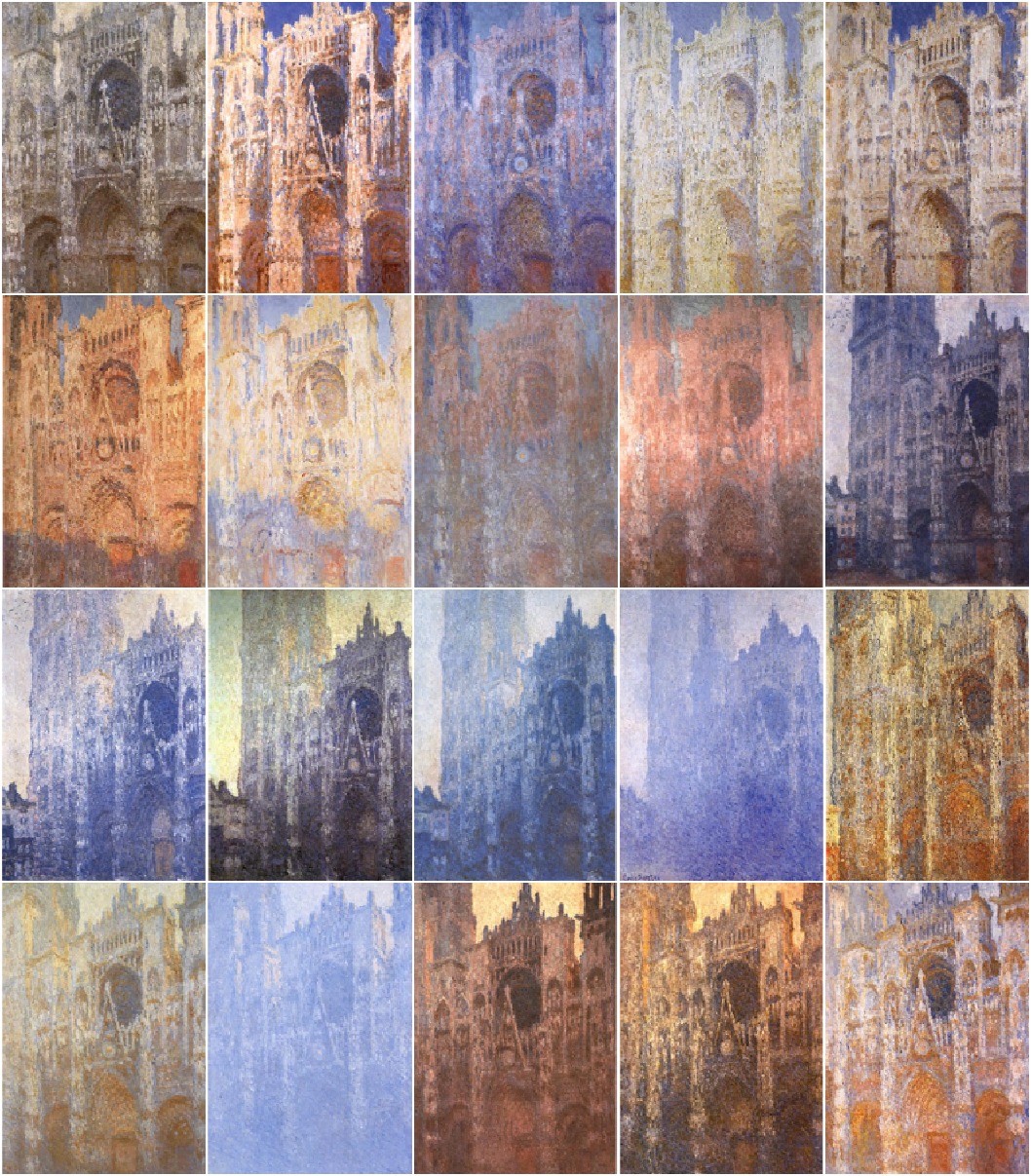 |
| Claude Monet, serie della Cattedrale di Rouen |
domenica 20 settembre 2015
martedì 15 settembre 2015
Ipse dixit: Blaise Pascal
Non è, tuttavia, senza rammarico, che mi allontano da queste opinioni così universalmente accettate. Lo faccio soltanto perché costretto dalla forza della verità. Ho resistito a queste nuove idee, finché ho potuto avere qualche appiglio per seguire gli antichi [...]. Ma, finalmente, l'evidenza delle esperienze mi ha obbligato ad abbandonare le opinioni alle quali mi aveva legato il rispetto per gli antichi.
Blaise Pascal, Trattati sull'equilibrio dei liquidi e sul peso della massa dell'aria
domenica 13 settembre 2015
sabato 12 settembre 2015
lunedì 7 settembre 2015
MASP di São Paulo, Lina Bo Bardi
Il MASP è il museo di arte moderna che si trova a San Paolo, in Brasile: è stato creato da Lina Bo Bardi, architetta italiana naturalizzata brasiliana, di cui da poco si è celebrato il centenario.
domenica 6 settembre 2015
Van Gogh, Strada con cipressi e stelle, 1890
Certo, quel cipresso è centrale, taglia in due il dipinto, si stabilisce come punto fermo e definito in mezzo allo scorrere vago della strada e del cielo: ma, in quel panorama, chi rende ragione e dà un senso alla bellezza di questa creazione sono quei due piccoli uomini, che domandano almeno un senso di sè, una misericordia, un cuore, un'identità.
Il cipresso li sovrasta, ma non sa che ha bisogno di misericordia: che senso ha questo cipresso, se la sua bellezza e stabilità non viene notata da qualcuno? A che serve che il grano sia giallo o che il cielo sembri mosso dalla luce della luna, se a guardarlo ci fossero soltanto cose che non chiedono ragione di tutto? La natura tutta del quadro non ha senso in se stessa, ma solo in relazione a quei due piccolissimi omini che la contemplano.
E io, di chi ho bisogno che mi contempli?
venerdì 28 agosto 2015
A Visit Inside One of the Only Hand-crafted Globe Studios in the World
Long gone are the days when our first instinct is to migrate to a spinning globe to track the destinations around us or find a specific country. Now we have the power to digitally zoom in and out of the entire earth, utilizing mapping tools like Google Earth. The romanticism tied to these newer forms however, does not match the art of the ancient globe, the earliest dating back to the mid-2nd century B.C. Nowadays globes are either modern and massively produced, or antiquated models unsuited for casual browsing.
mercoledì 26 agosto 2015
martedì 25 agosto 2015
Ojos no ven, Pastor Sabillon
Ojos no ven no es un refrán a mitad ni una frase de impacto: es la realidad en la cual vivimos nuestro cotidiano. La normalidad es cubrirse los ojos, no ver, ser indiferentes. Entonces, se vive en la distracción, en el desenfreno, en la esquizofrenia. Lo que no me toca, no me interesa. La opinión dominante, en el mundo de hoy, nos dice: “tratemos de no preocuparnos demasiado, no demos una síntesis de los elementos humanos, no nos esforcemos por hallar lo que somos. Conocer el núcleo de lo que está en el hombre puede dar, y da, los vértigos de una tensión constante que no permite al orden establecido perpetuarse y dominar.”
Es como tener una herida y pensar en otra cosa para no pensar en el sufrimiento. Me repito que estaré mejor y que la herida sanará. O podría abandonarme al dolor, desangrarme y morir pensando que este sufrir era el único sentido de mi vida. O aún, podría reconocer en ese dolor un inicio nuevo: si existe este mal es porque en mí existe la memoria de un bien. Ese dolor despierta en mí la necesidad de un bien, que exista una cura a mi mal, que no sea la muerte y el sufrimiento la última palabra, que haya un sentido más grande para aquel dolor, como nos recuerda Antonio de Petro: “Sin embargo, el corazón quisiera al menos pronunciar una palabra que diera esperanza. Quisiera saber que todavía, todo podría suceder”.
Iscriviti a:
Post (Atom)
Campionare i fumetti: Samplerman comics by Yvang
"Yvan Guillo, aka Yvang, è un fumettista francese nato nel 1971. Ha cominciato pubblicando fumetti in varie fanzine fin dai primi anni ...

-
Fig. 1 : Pablo Zelaya Sierra. Paisaje con hombre segando . 73 x 63.5 cm. Sin fecha . Fig. 2 : Pablo Zelaya Sierra. La...
-
Fig. 1 : Pablo Zelaya Sierra. Campesinas . 1932. Oleo sobre lienzo. 73.7 x 83.4 cm Fig. 2 : Pablo Zelaya Sierra. La...





